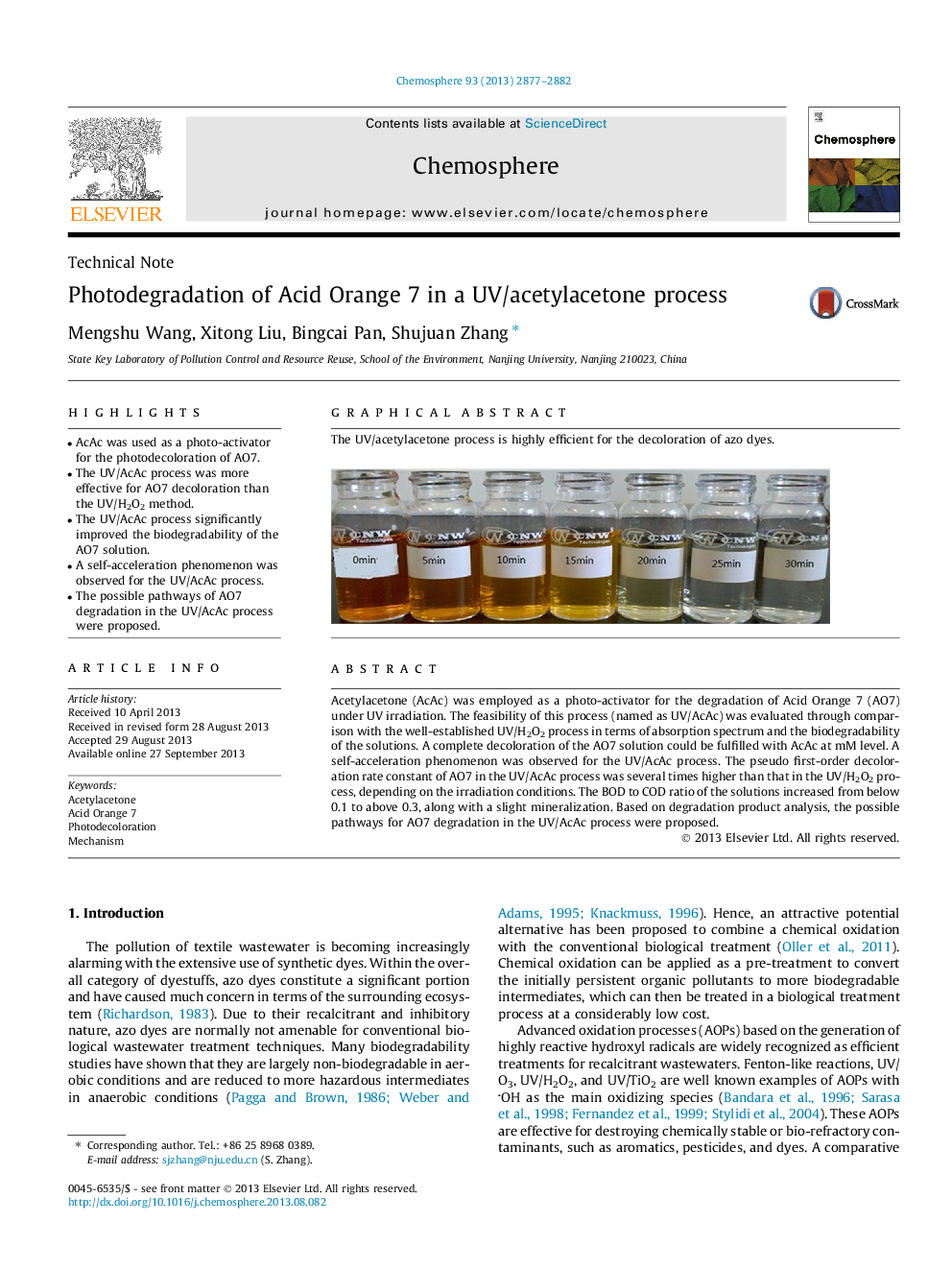| Article ID | Journal | Published Year | Pages | File Type |
|---|---|---|---|---|
| 4409119 | Chemosphere | 2013 | 6 Pages |
•AcAc was used as a photo-activator for the photodecoloration of AO7.•The UV/AcAc process was more effective for AO7 decoloration than the UV/H2O2 method.•The UV/AcAc process significantly improved the biodegradability of the AO7 solution.•A self-acceleration phenomenon was observed for the UV/AcAc process.•The possible pathways of AO7 degradation in the UV/AcAc process were proposed.
Acetylacetone (AcAc) was employed as a photo-activator for the degradation of Acid Orange 7 (AO7) under UV irradiation. The feasibility of this process (named as UV/AcAc) was evaluated through comparison with the well-established UV/H2O2 process in terms of absorption spectrum and the biodegradability of the solutions. A complete decoloration of the AO7 solution could be fulfilled with AcAc at mM level. A self-acceleration phenomenon was observed for the UV/AcAc process. The pseudo first-order decoloration rate constant of AO7 in the UV/AcAc process was several times higher than that in the UV/H2O2 process, depending on the irradiation conditions. The BOD to COD ratio of the solutions increased from below 0.1 to above 0.3, along with a slight mineralization. Based on degradation product analysis, the possible pathways for AO7 degradation in the UV/AcAc process were proposed.
Graphical abstractThe UV/acetylacetone process is highly efficient for the decoloration of azo dyes.Figure optionsDownload full-size imageDownload as PowerPoint slide
